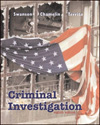Probably no other crimes are more emotionally laden than those involving children as victims. Police officers and investigators often speak of the intense emotion associated with viewing innocent children as victims of crime. Unfortunately, incidents of crime against children have increased dramatically during the past decade. Today, their prevalence seems to have reached epidemic proportions. It takes little effort to find reports of child abuse and assault in newspapers, on television, and from other media sources. As a result, increasing numbers of police departments have investigators who are assigned exclusively to the investigation of crimes against children. For this reason, this chapter focuses on issues of child abuse and assault, including some of the techniques and problems associated with investigating these crimes. Crimes perpetrated against children can appear in many forms and contexts. Children may experience abuse, for example, that results in burn injuries, yet deliberate burning often goes unrecognized. It is especially important in such cases that investigators establish good rapport with hospital workers and, particularly, emergency medical technicians, who will probably be the first persons to see the child’s injuries. After discussing burn injuries, the chapter explains shaken-baby syndrome and Munchausen syndrome by proxy, two crimes that have recently received much societal attention. Next, the chapter addresses the investigation of sexual crimes against children, such as molestation and incest. The investigation is one of the saddest experience in any officer’s career, and few officers are able to complete it without some feeling of anger and remorse, particularly since in many cases these crime are committed against children by their own parents or guardians. Also discussed in this chapter is infant abduction, another crime that is on the rise. In regard to older missing children, strategies are provided for use by investigators in determining whether a child has been abducted or has run away. Next, child pornography, a crime that is rapidly increasing due to facilitation by the internet, is discussed. The chapter concludes with sections on sex-offender registration and on crimes in schools, including overviews on threat assessments and on personality traits and behaviors of troubled children who commit crimes in schools. |



 2002 McGraw-Hill Higher Education
2002 McGraw-Hill Higher Education